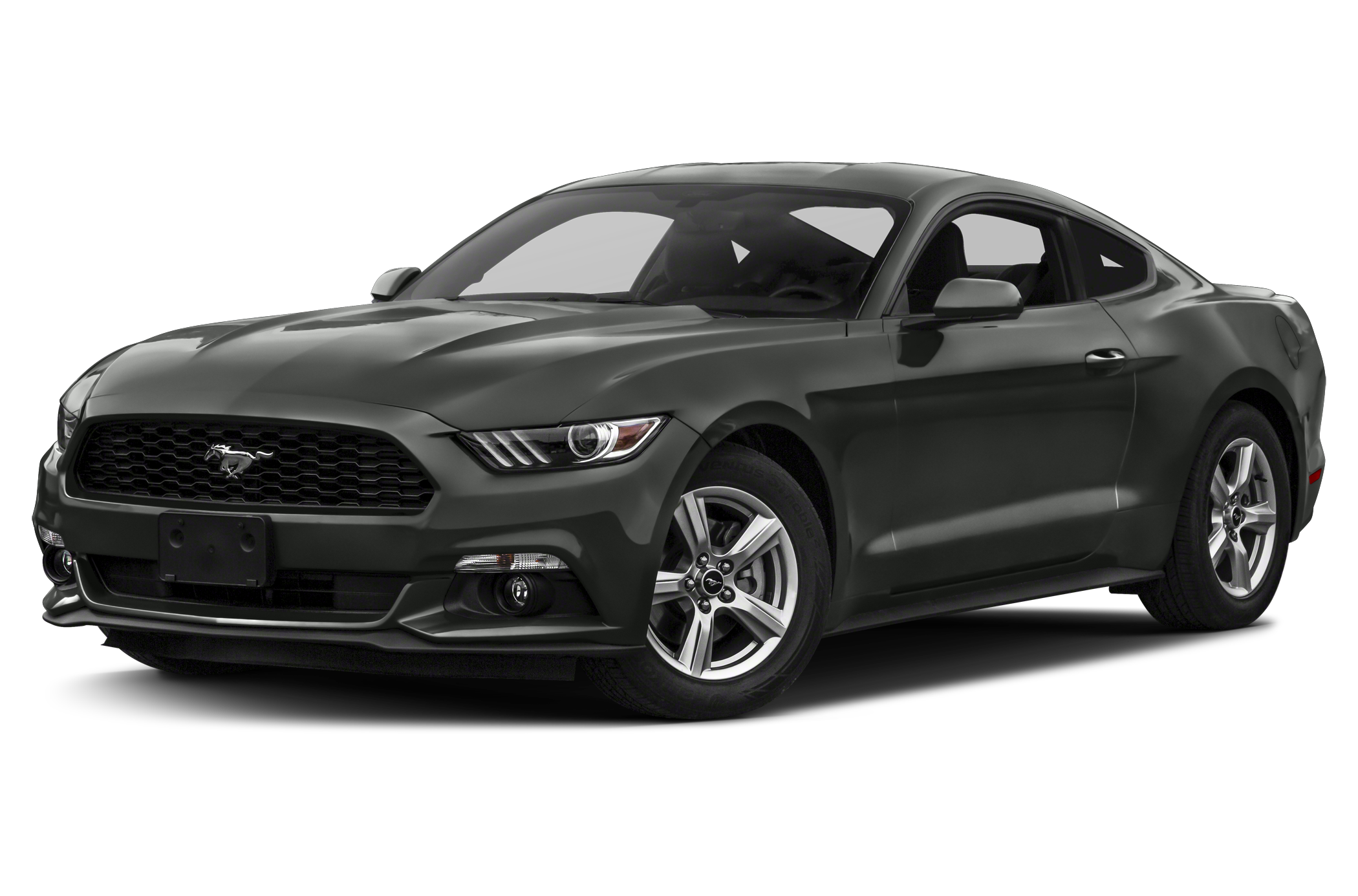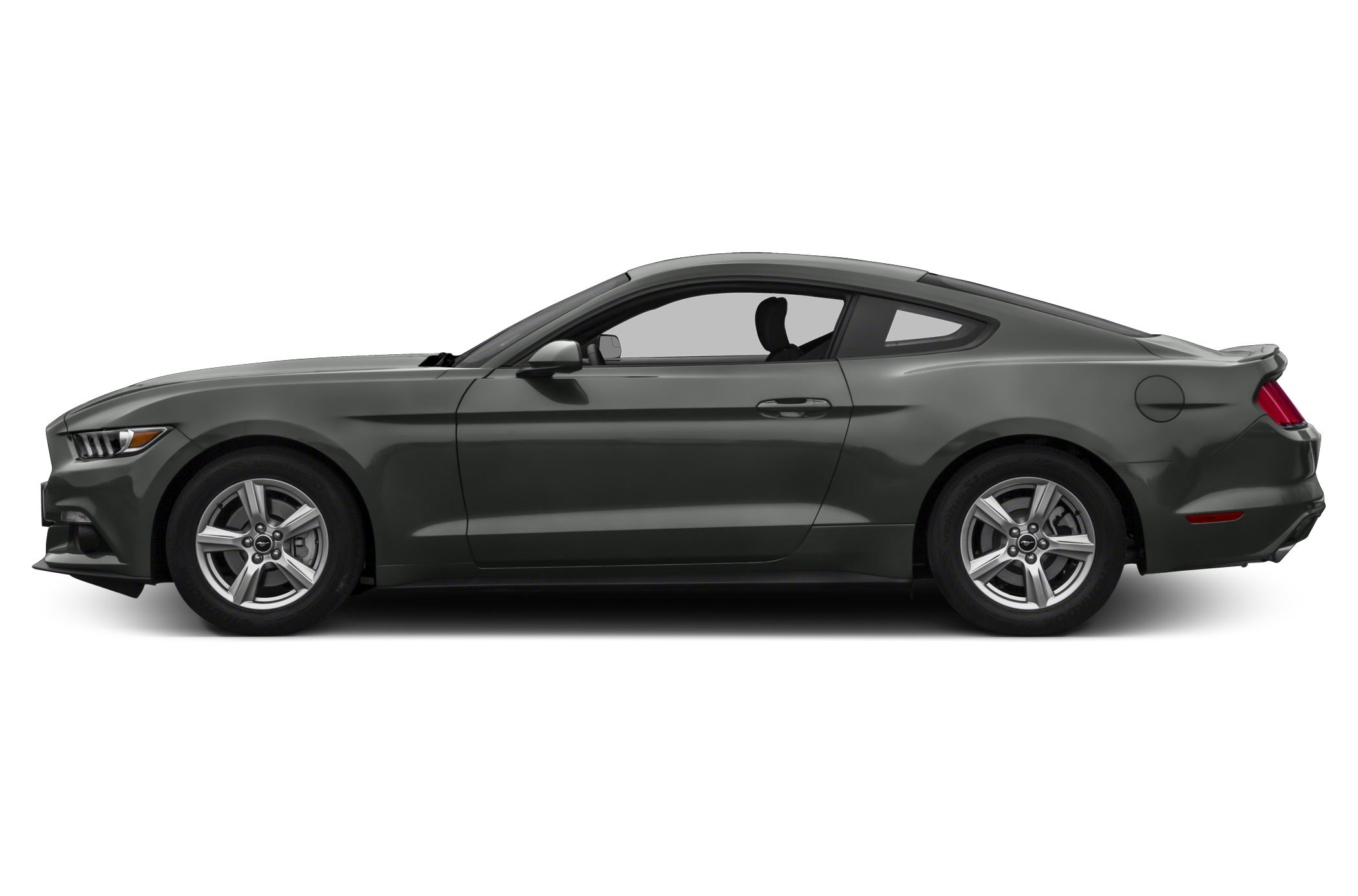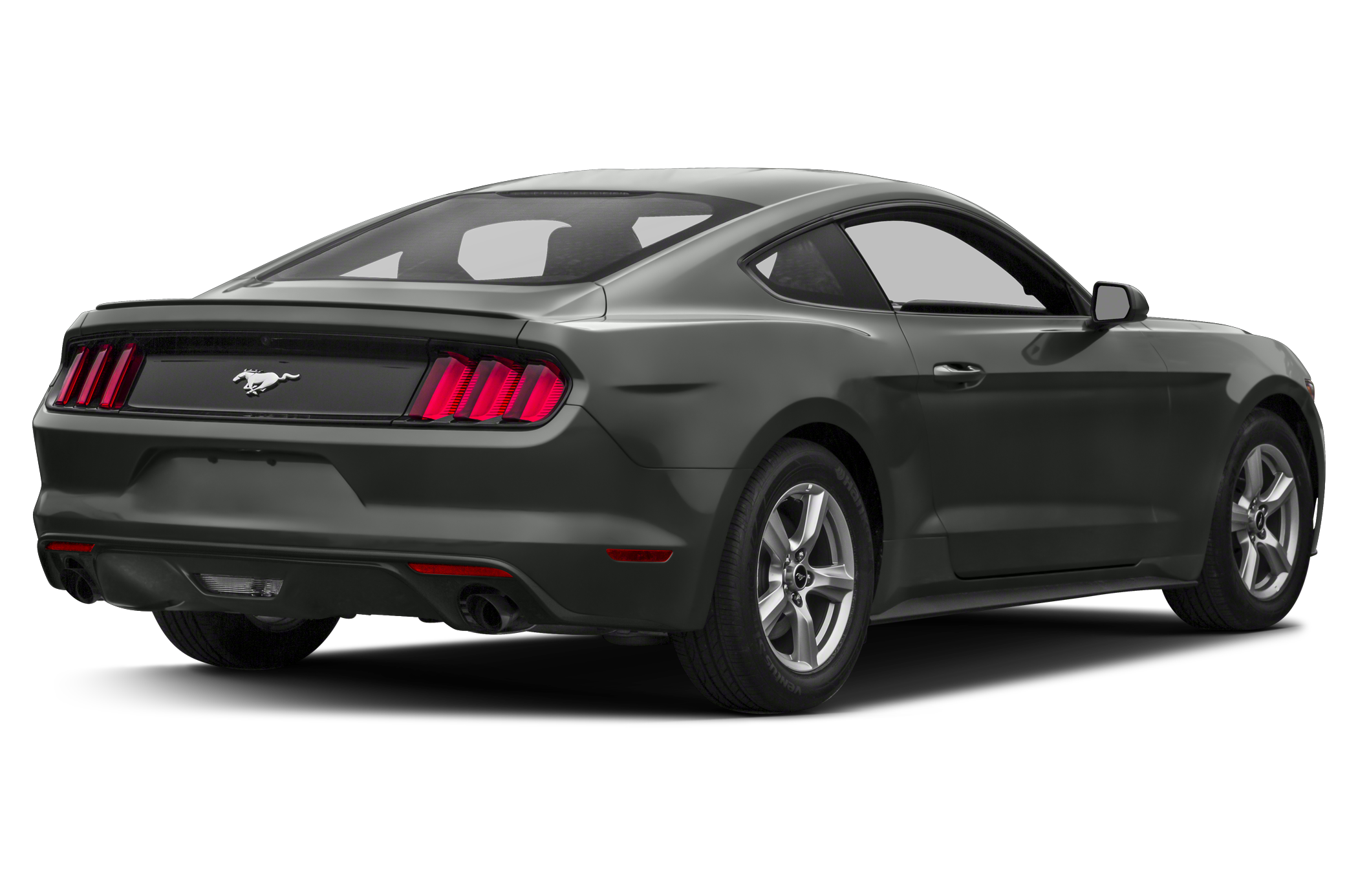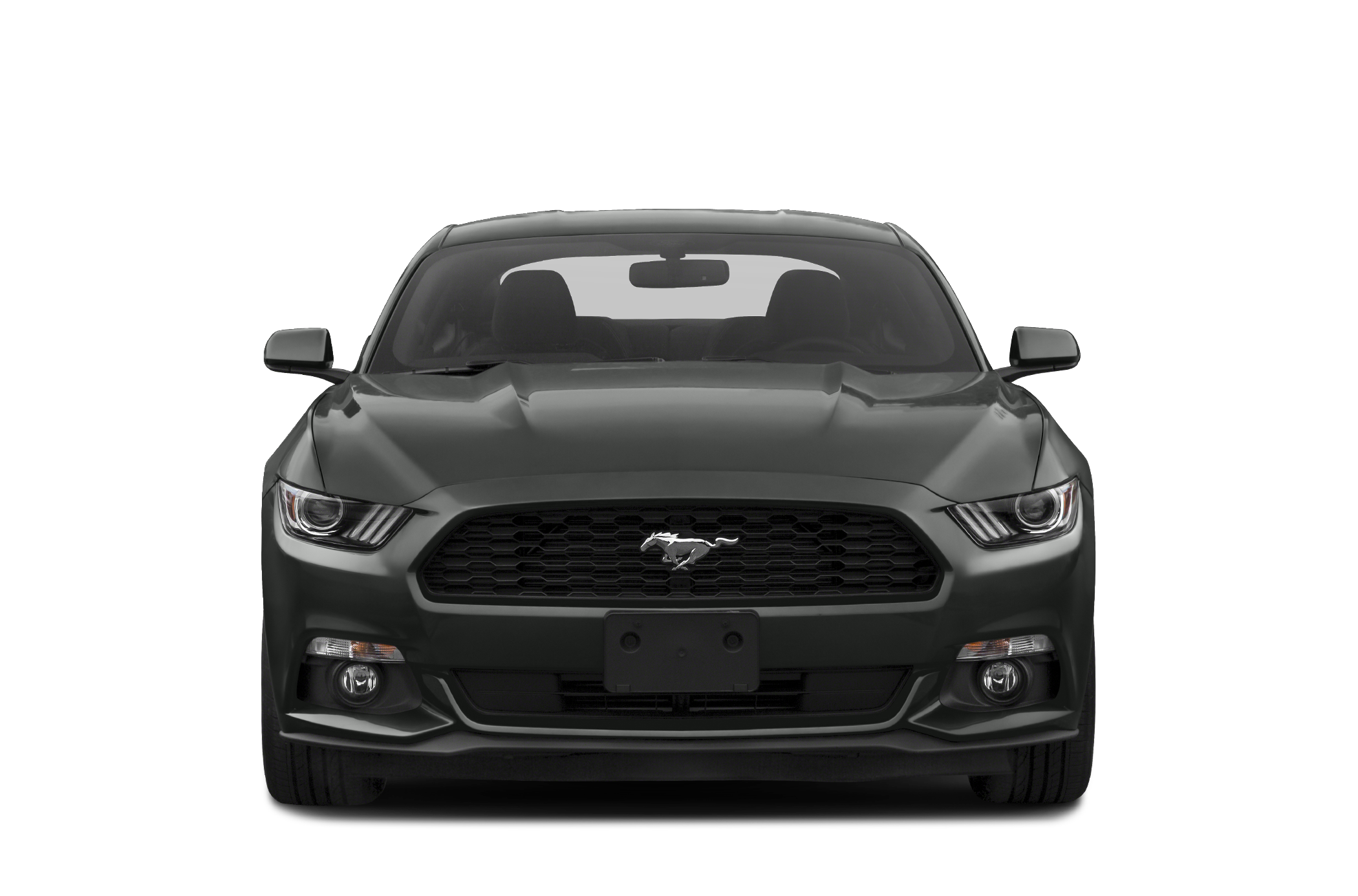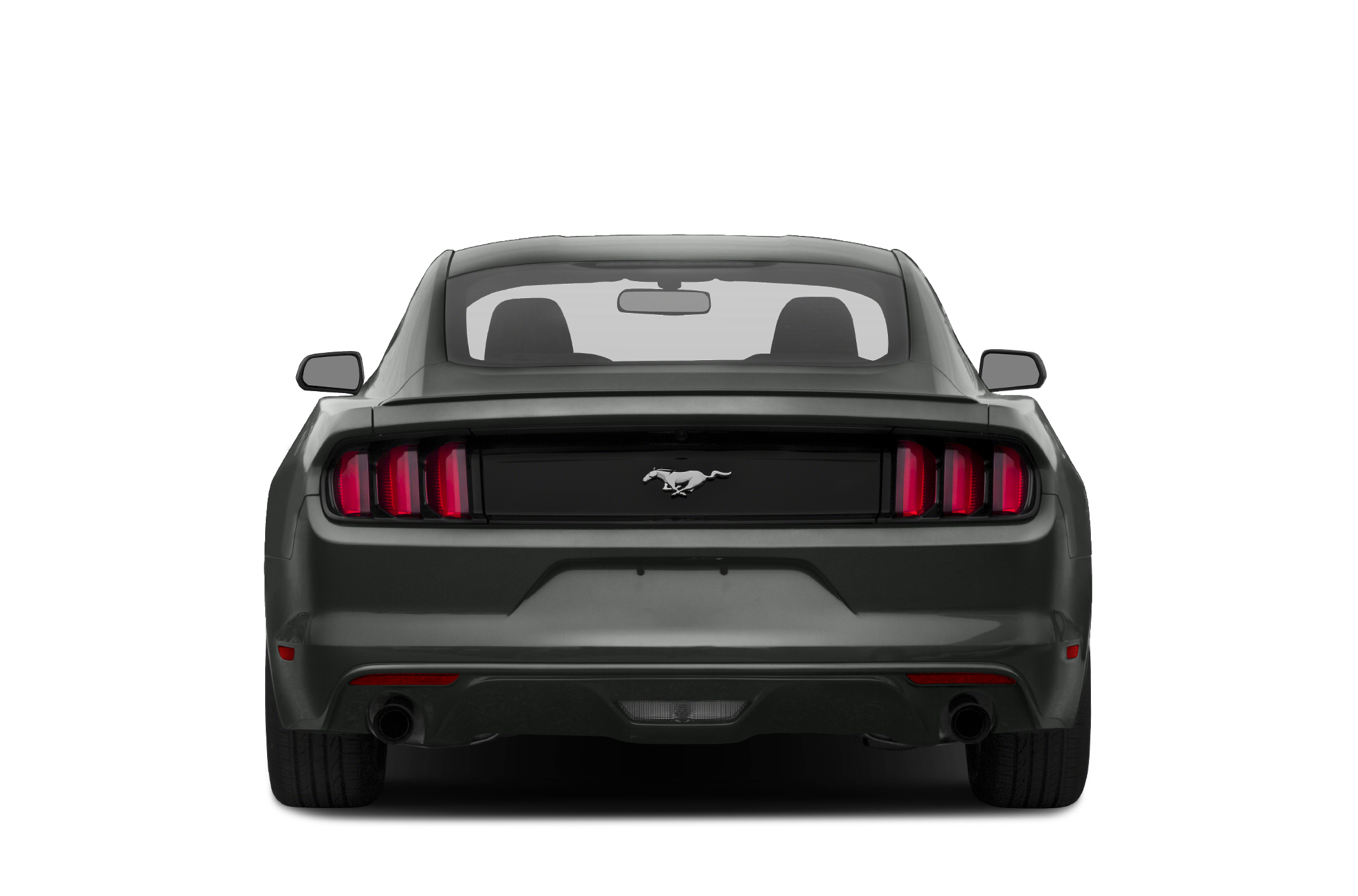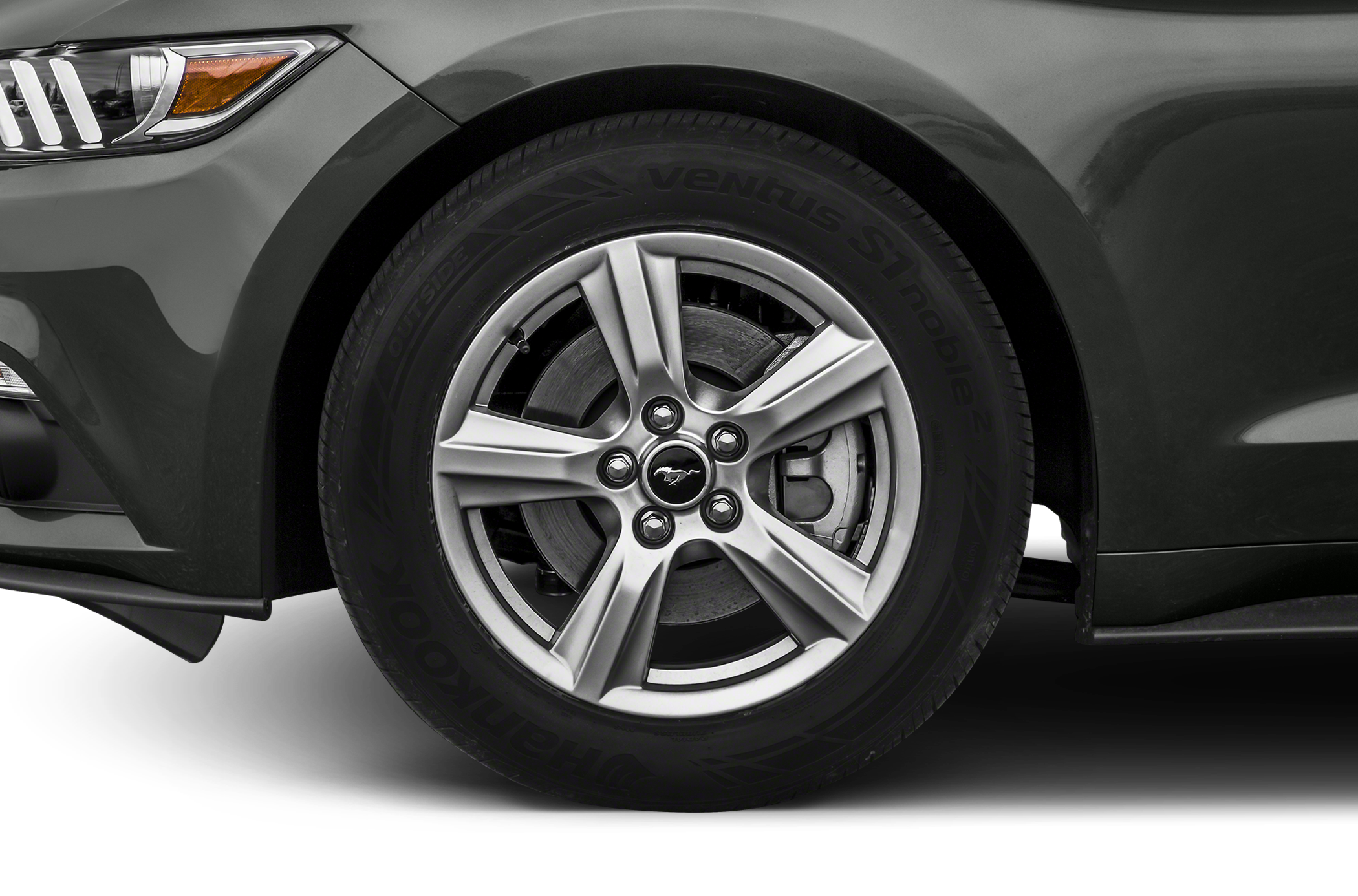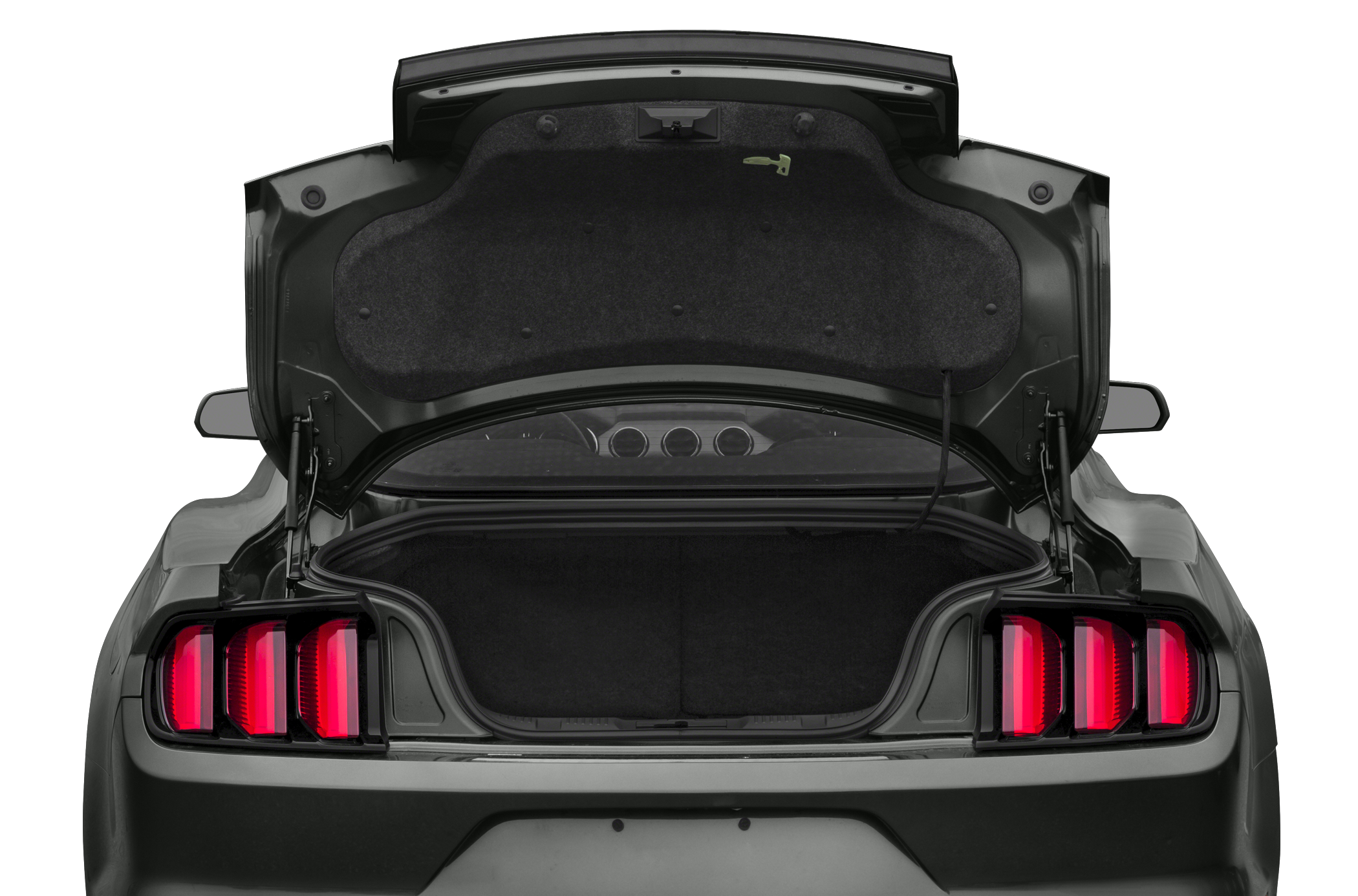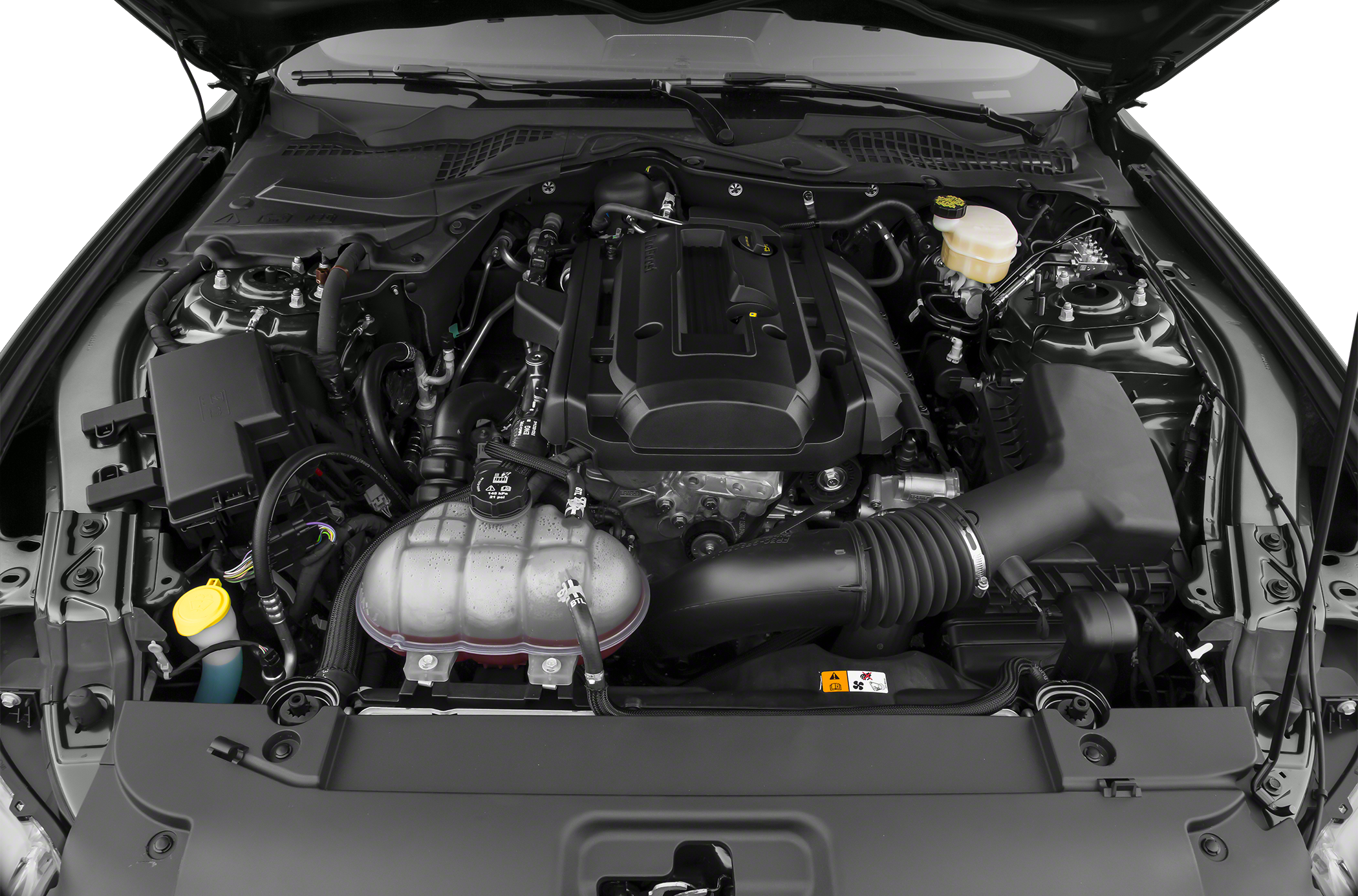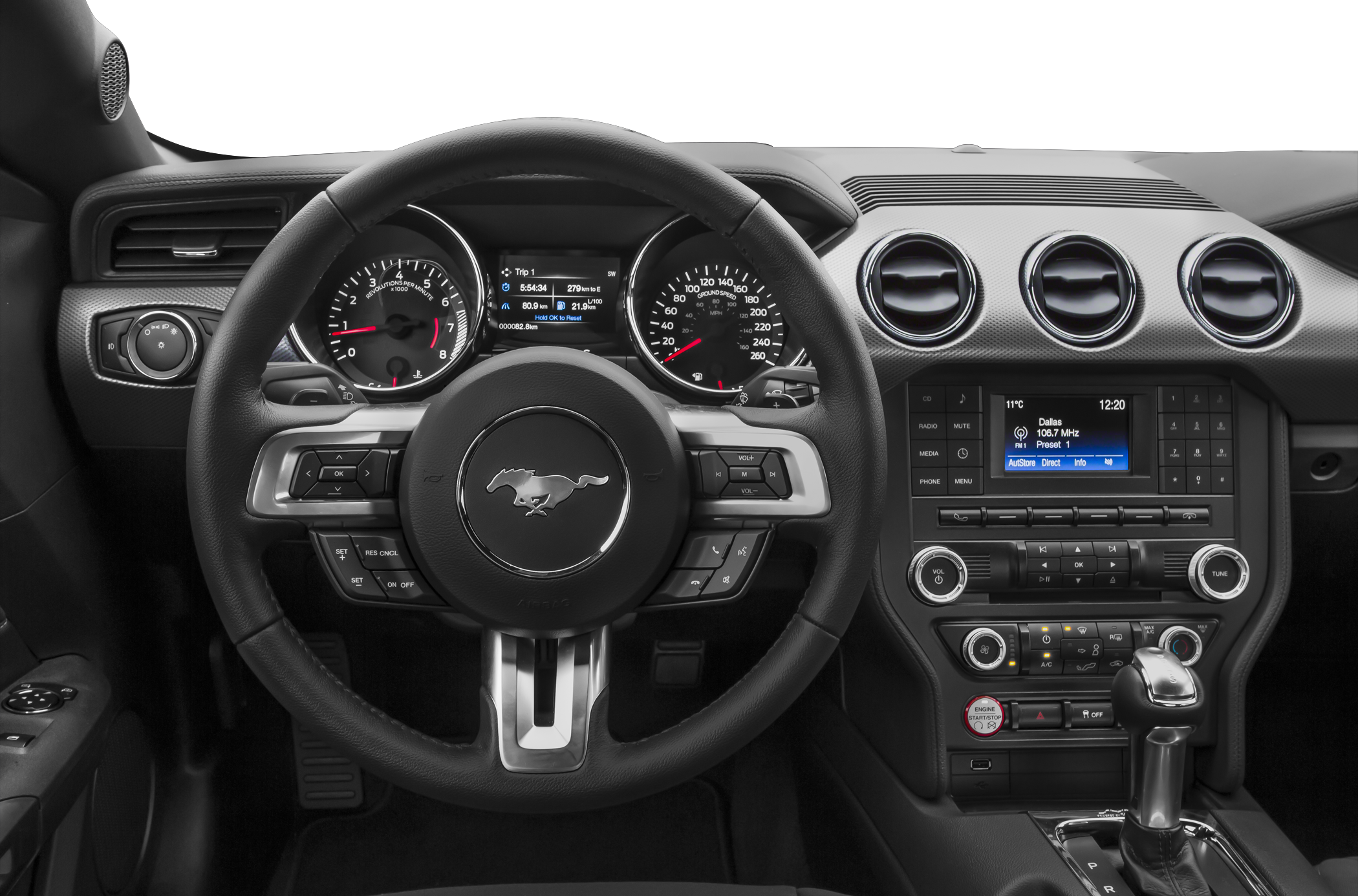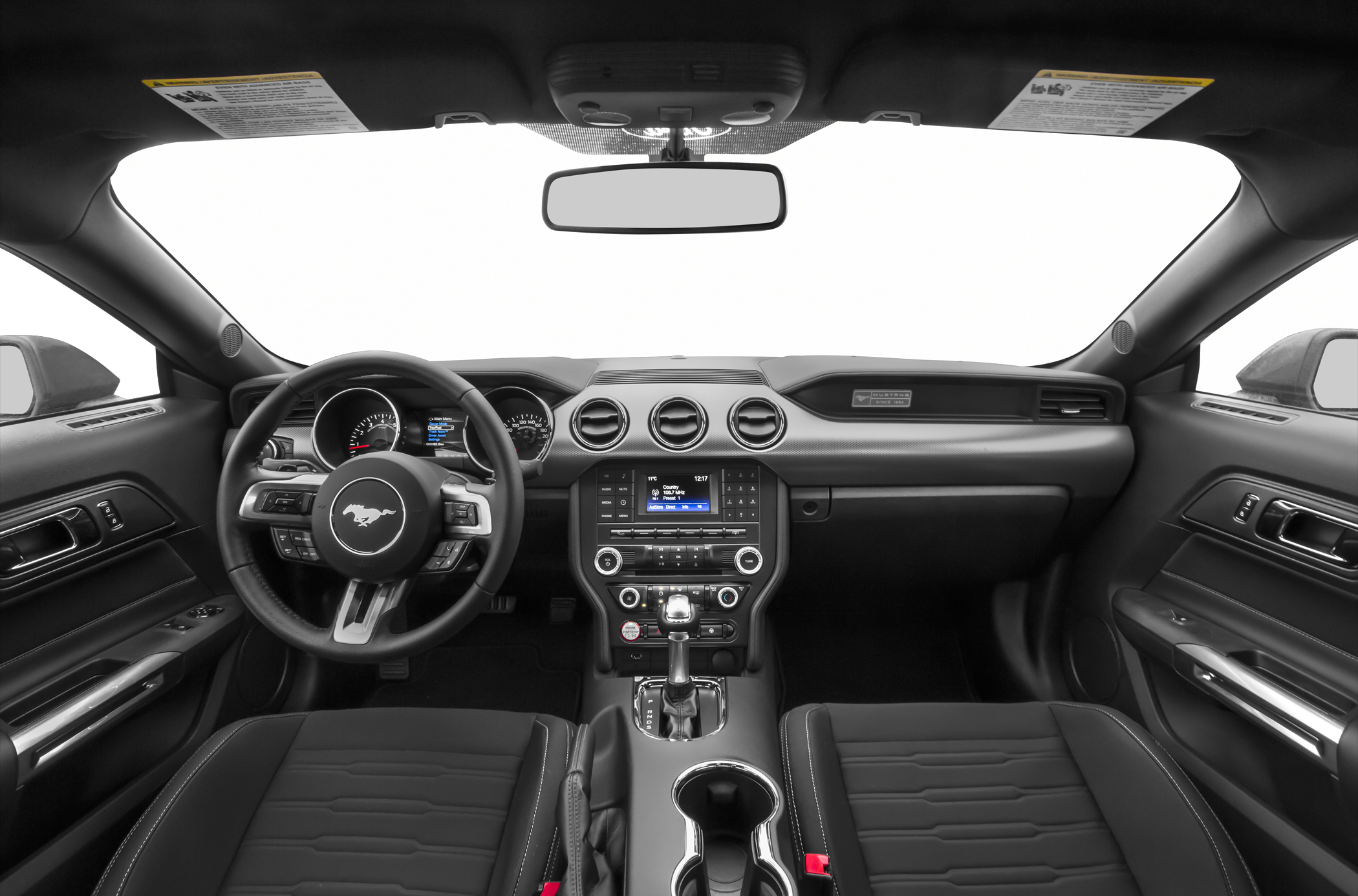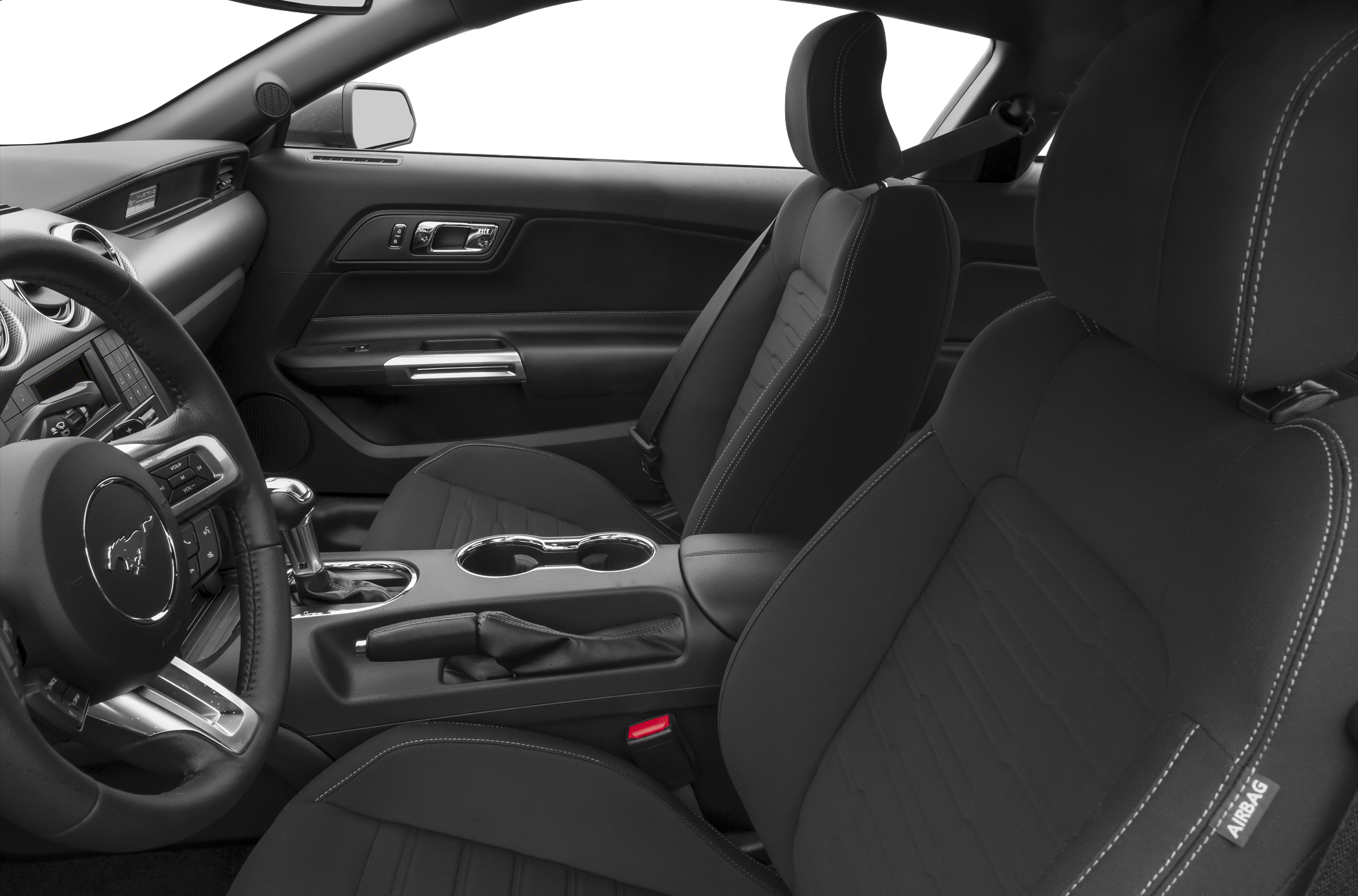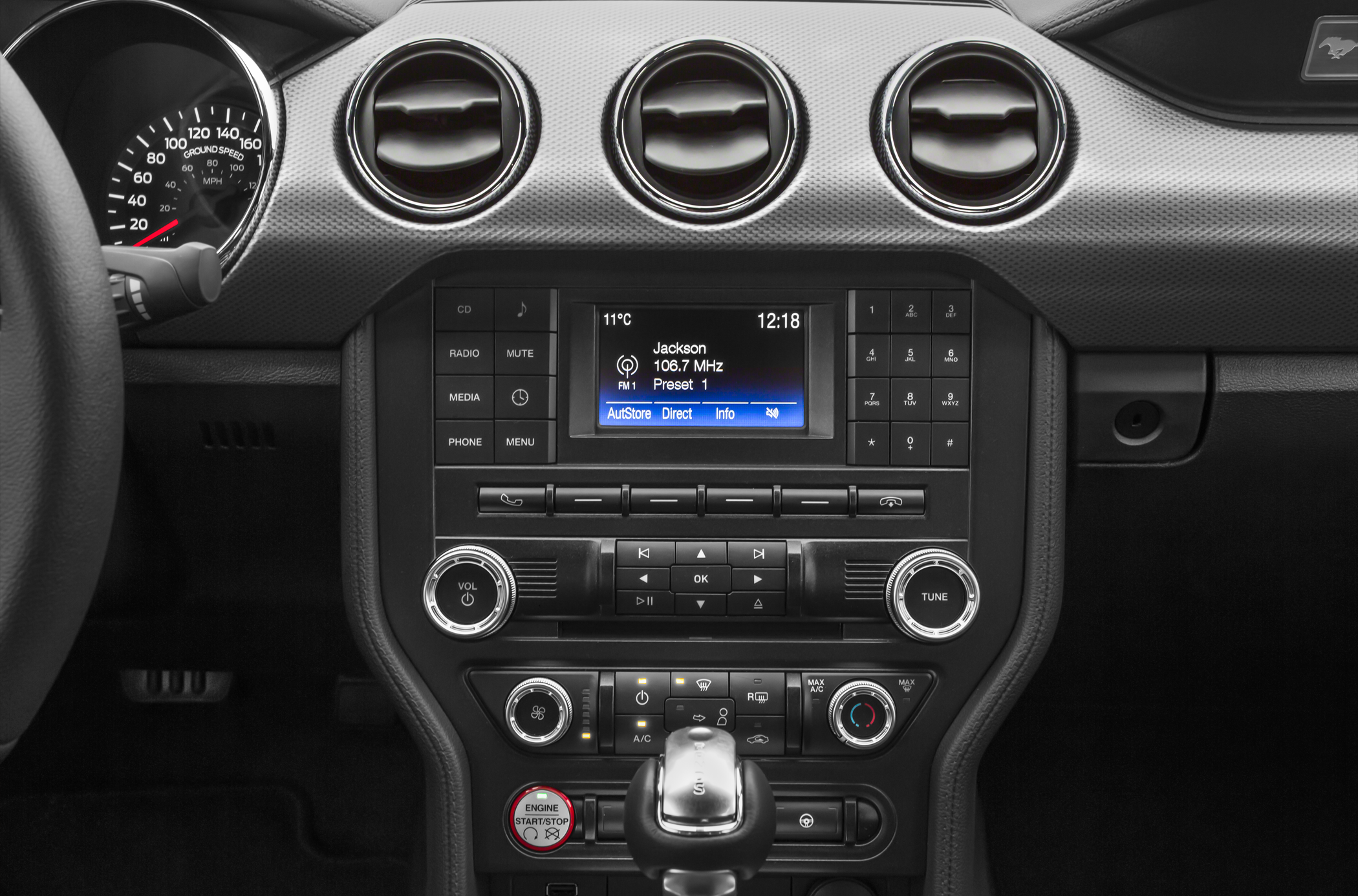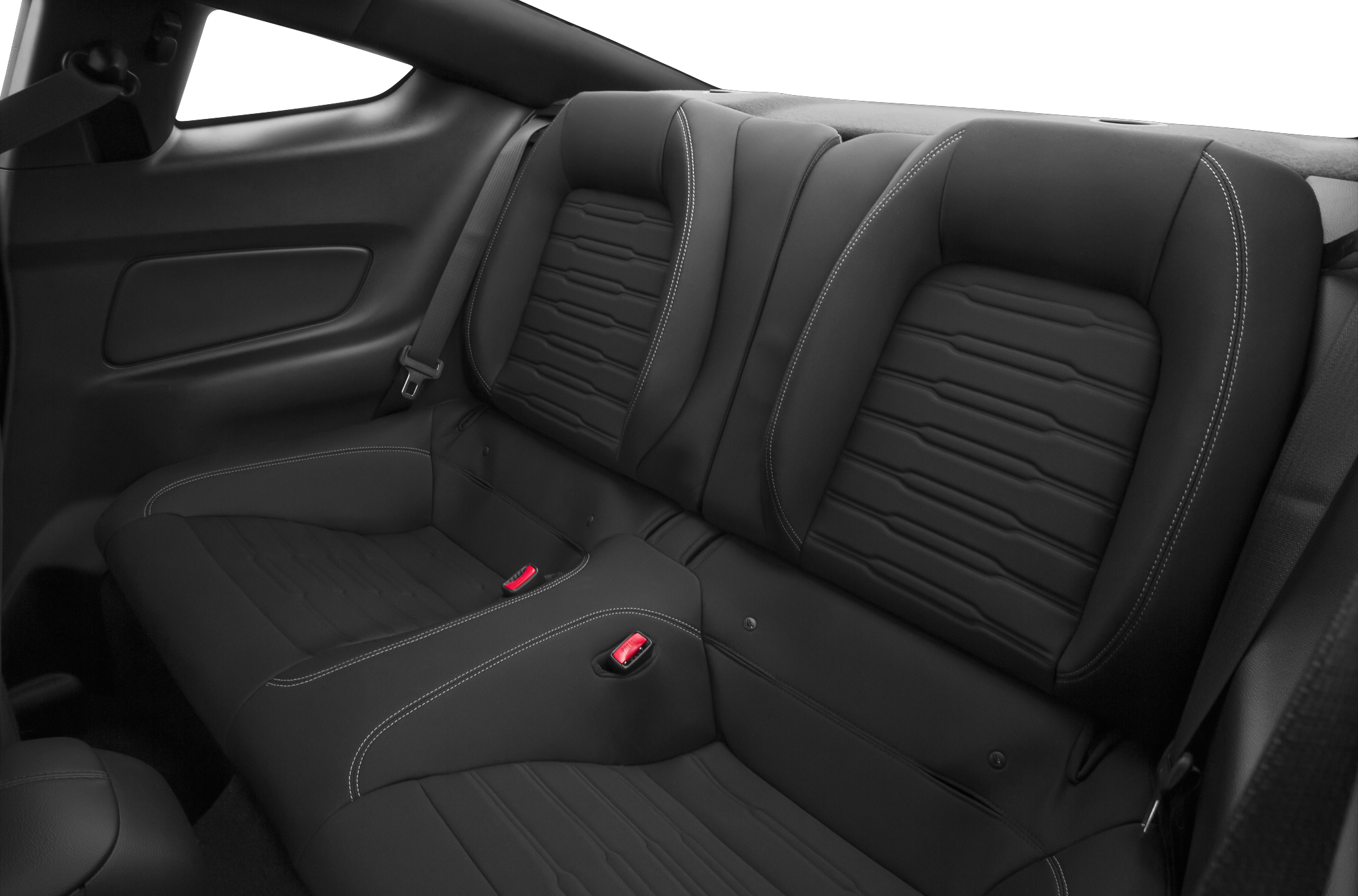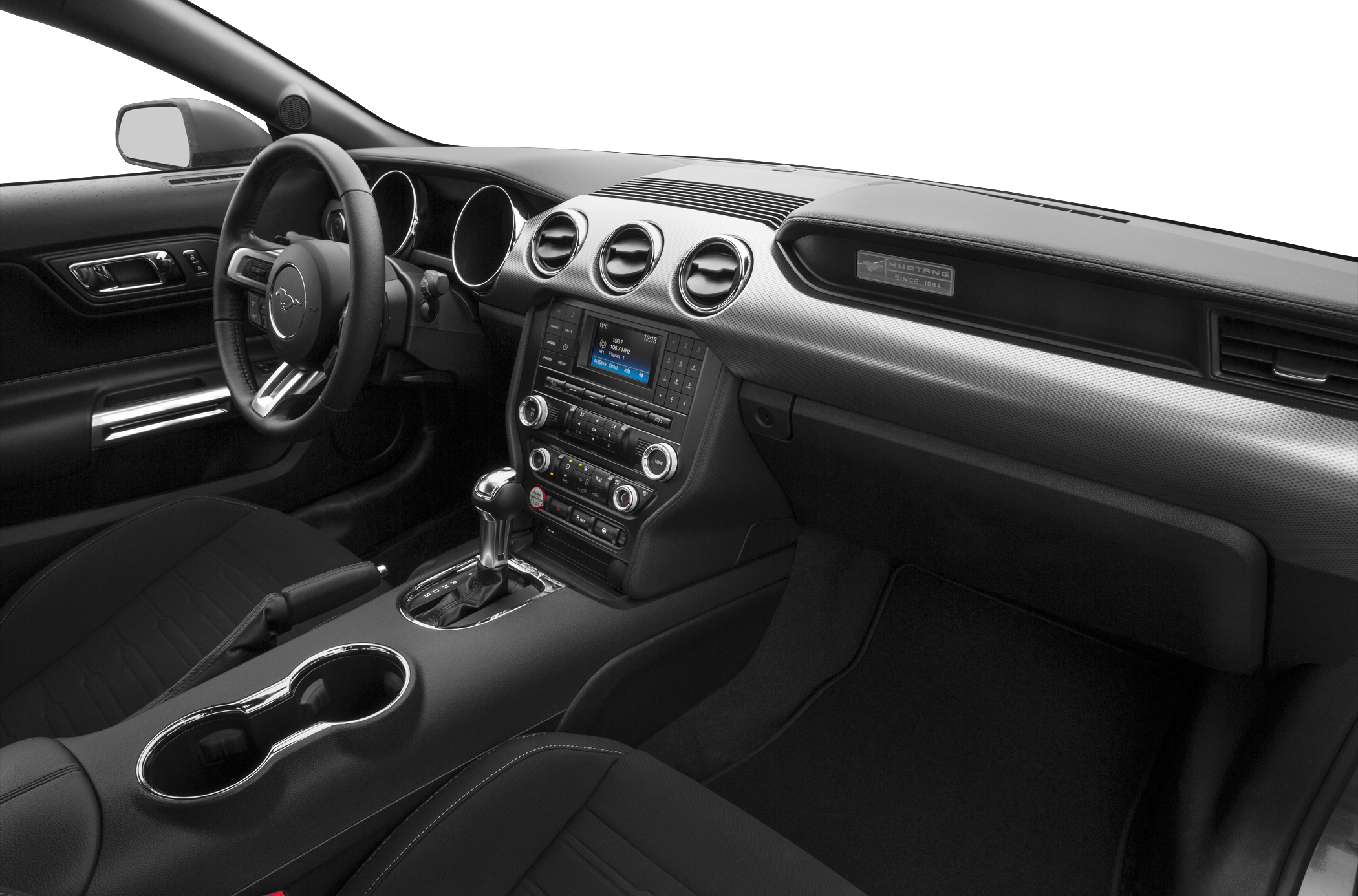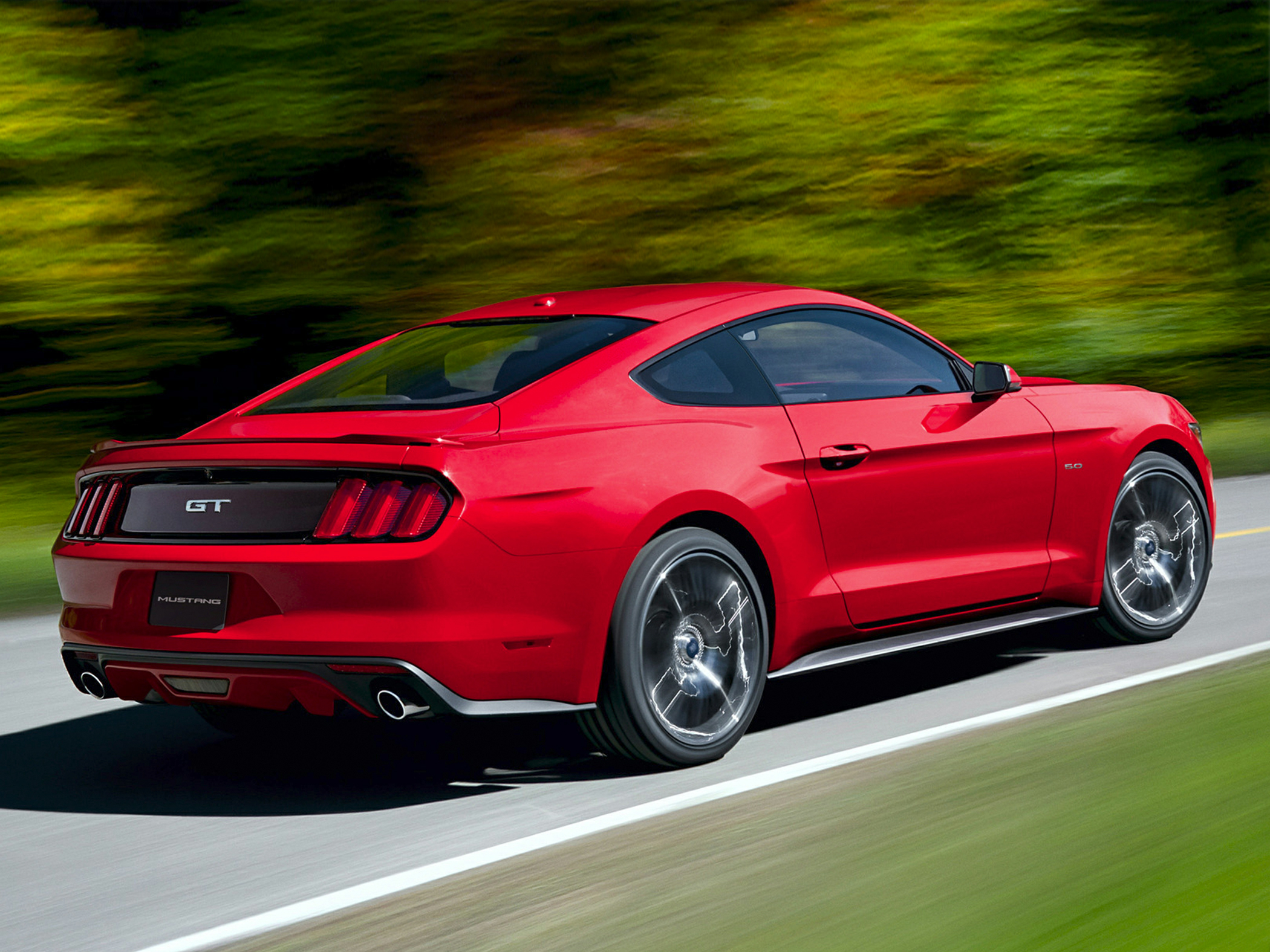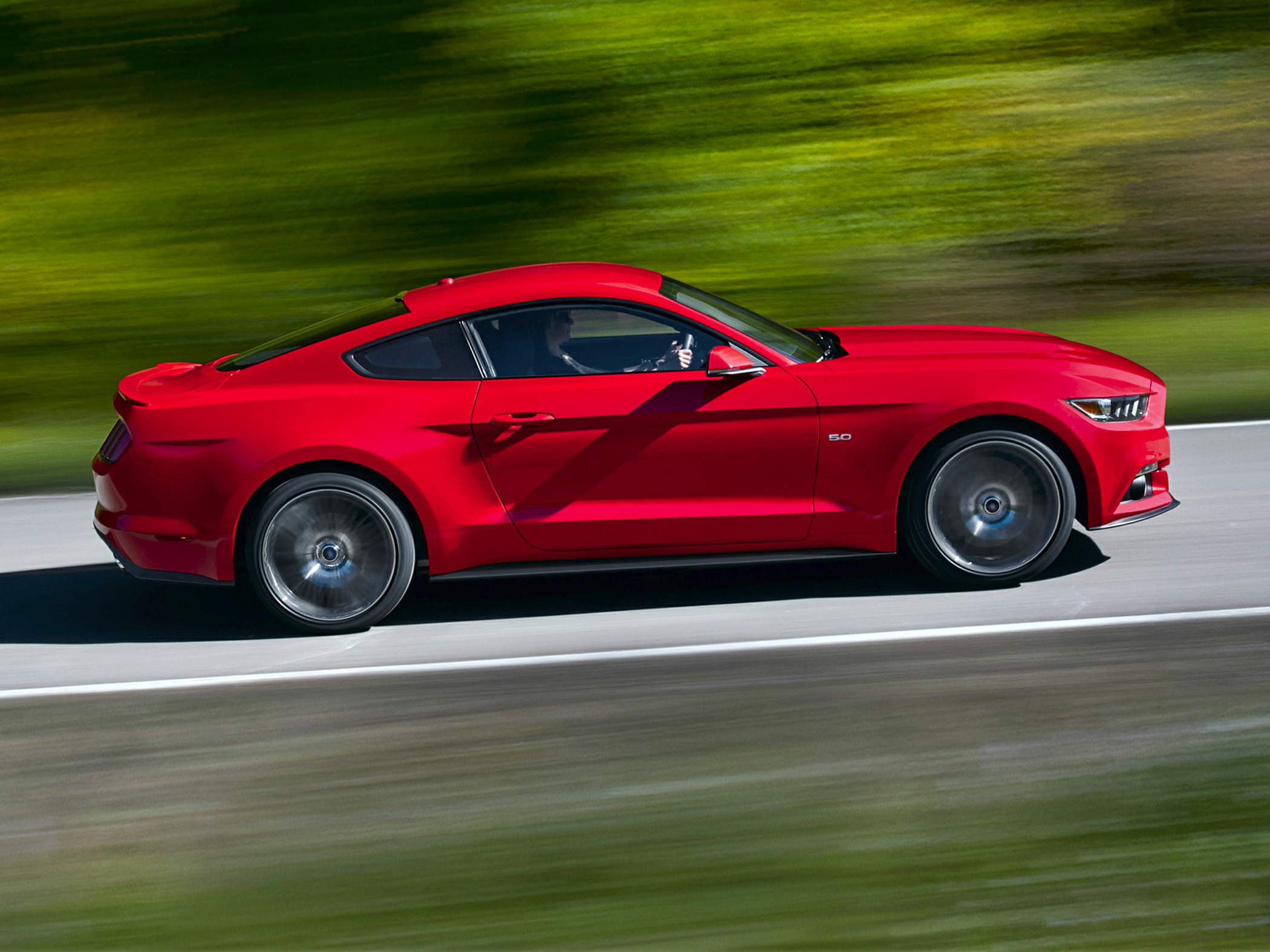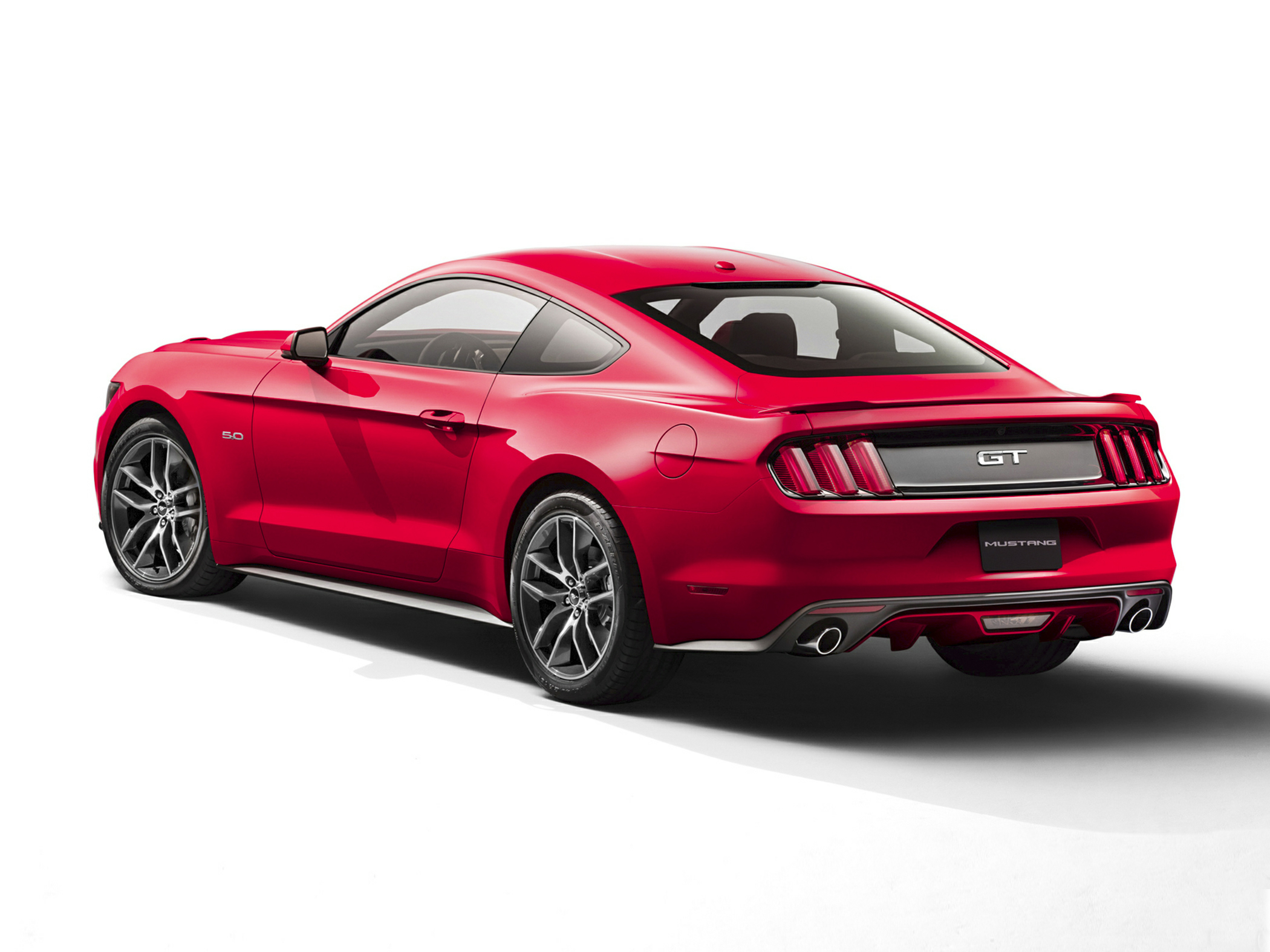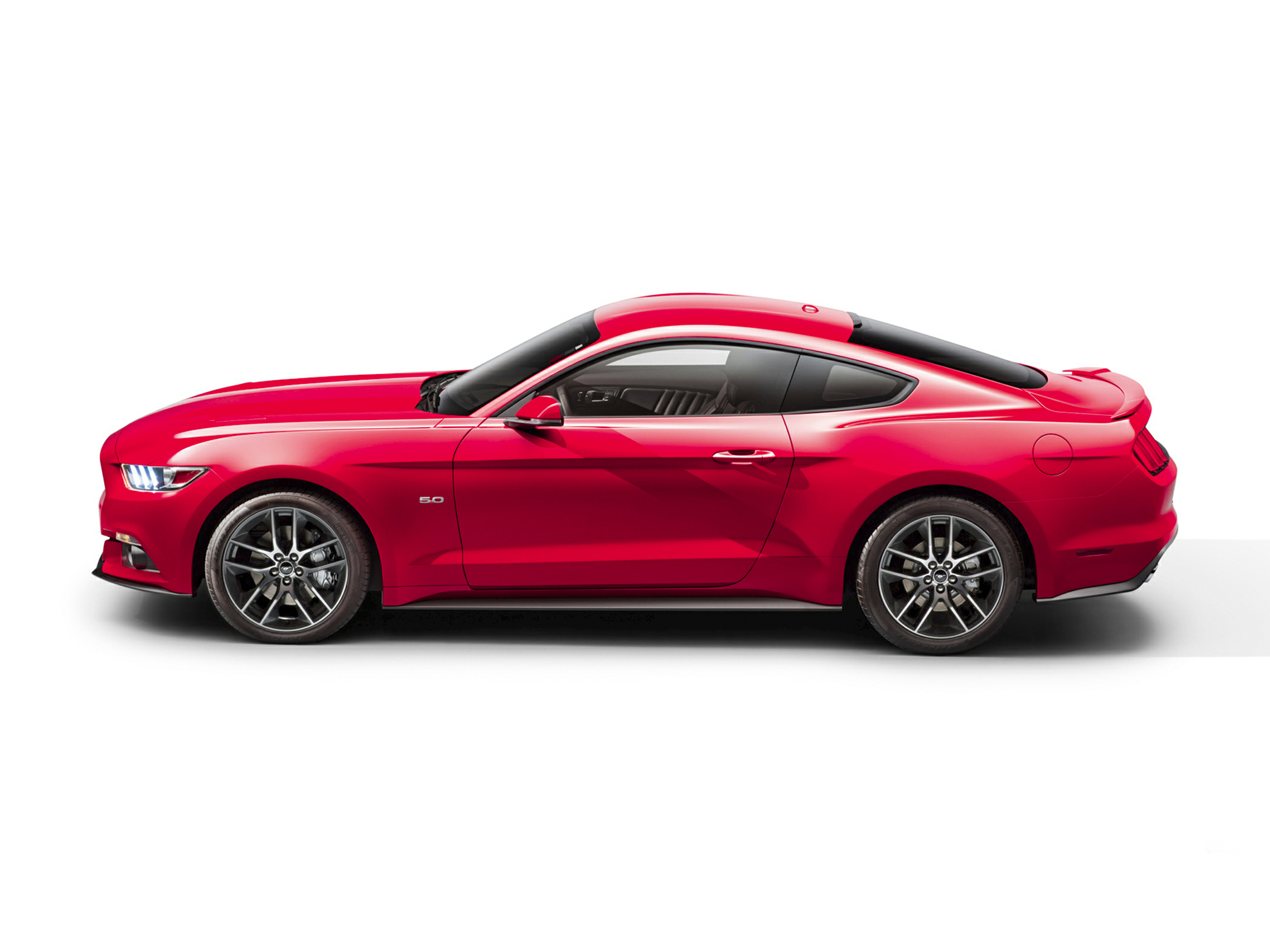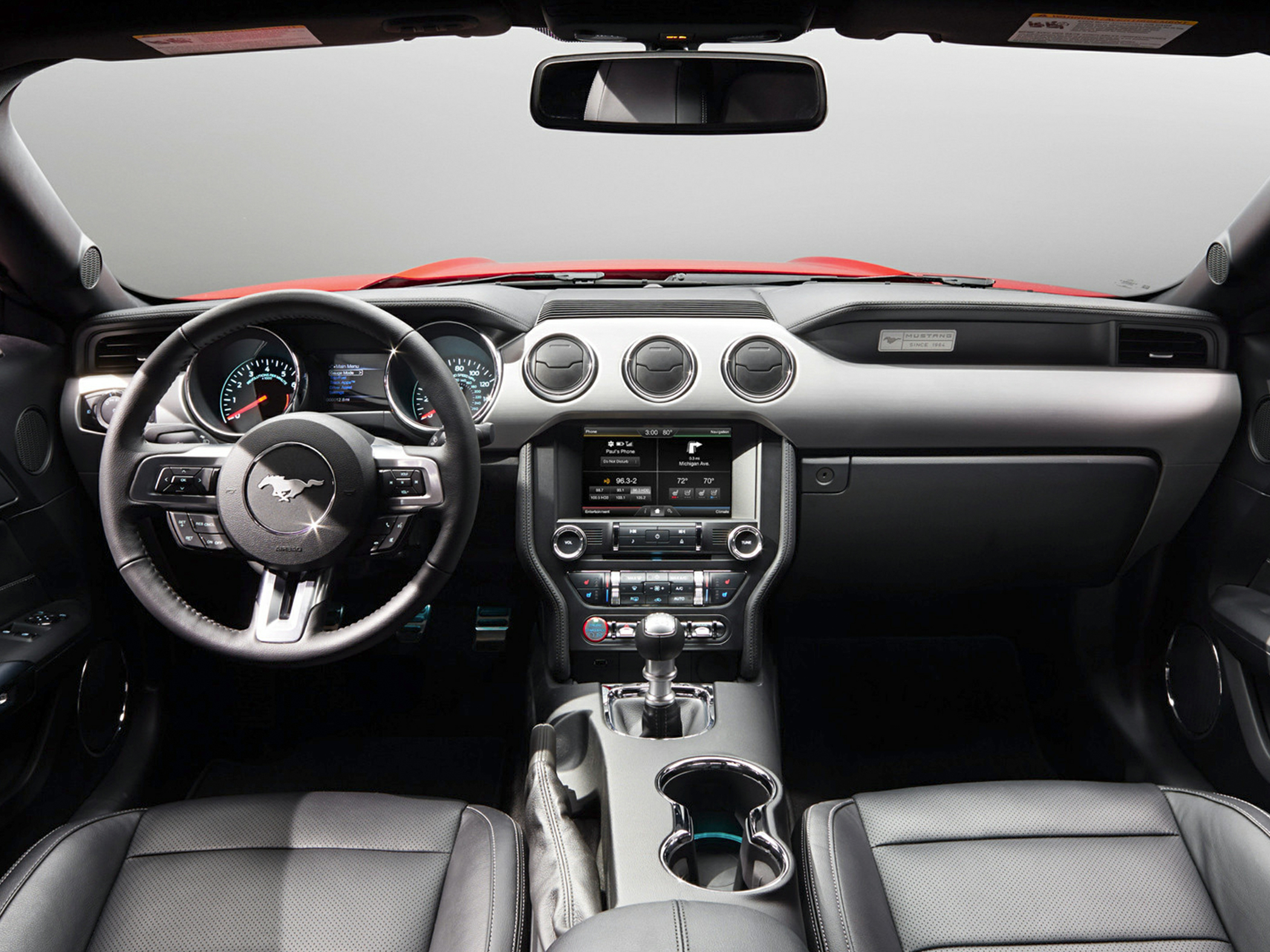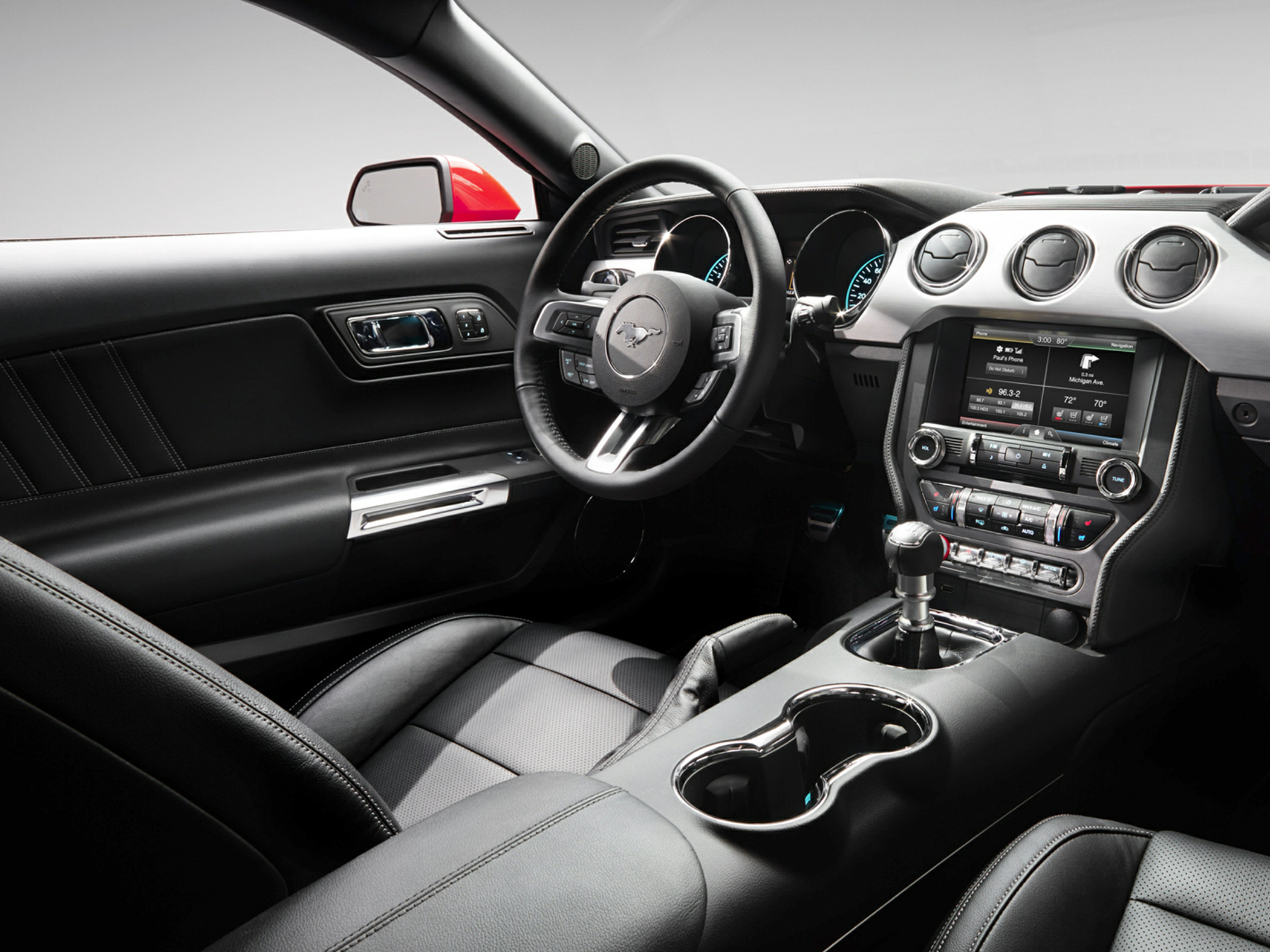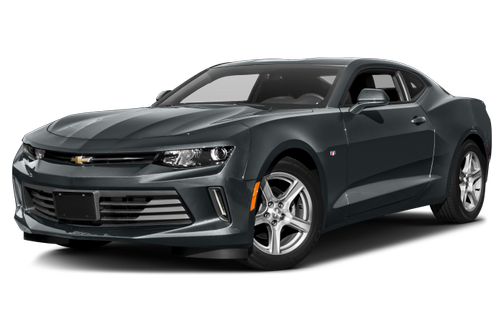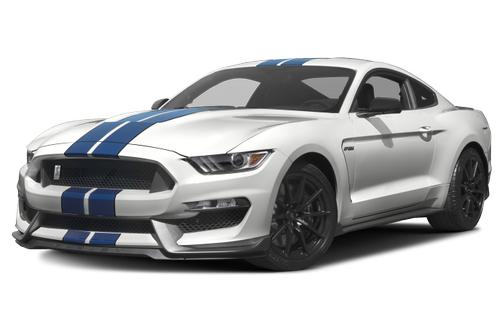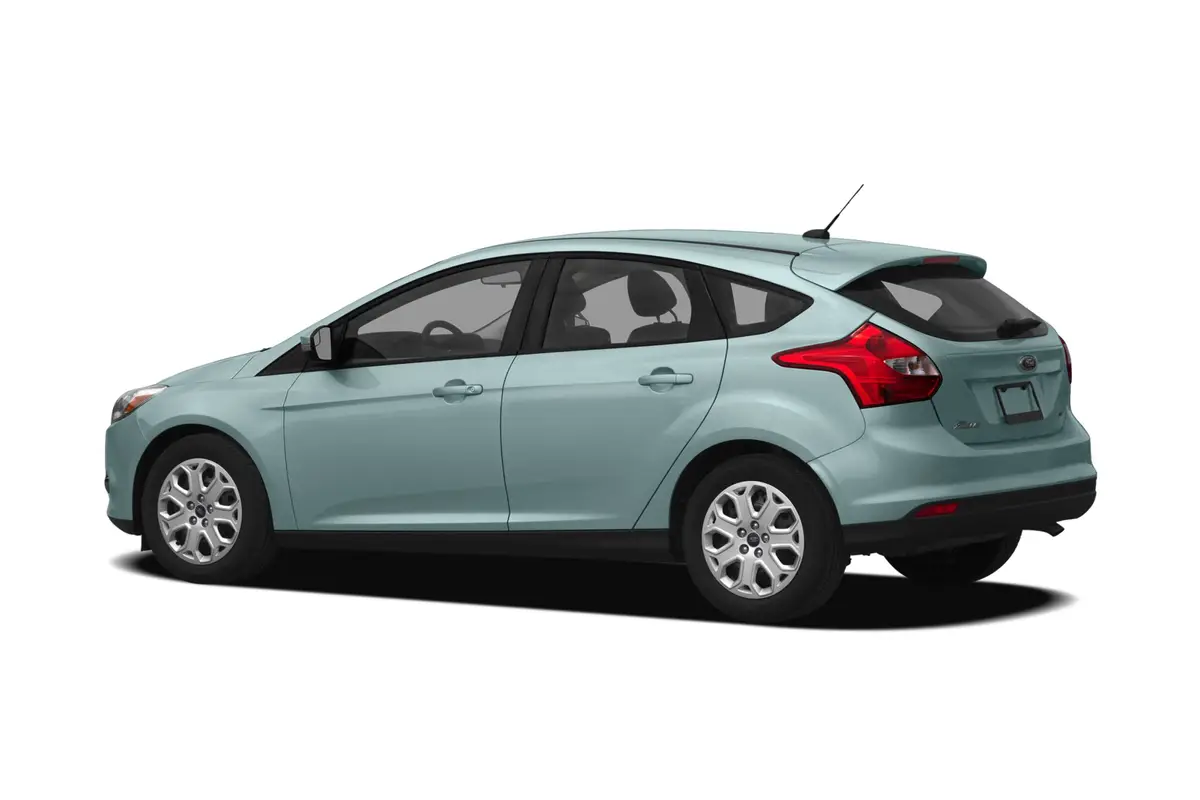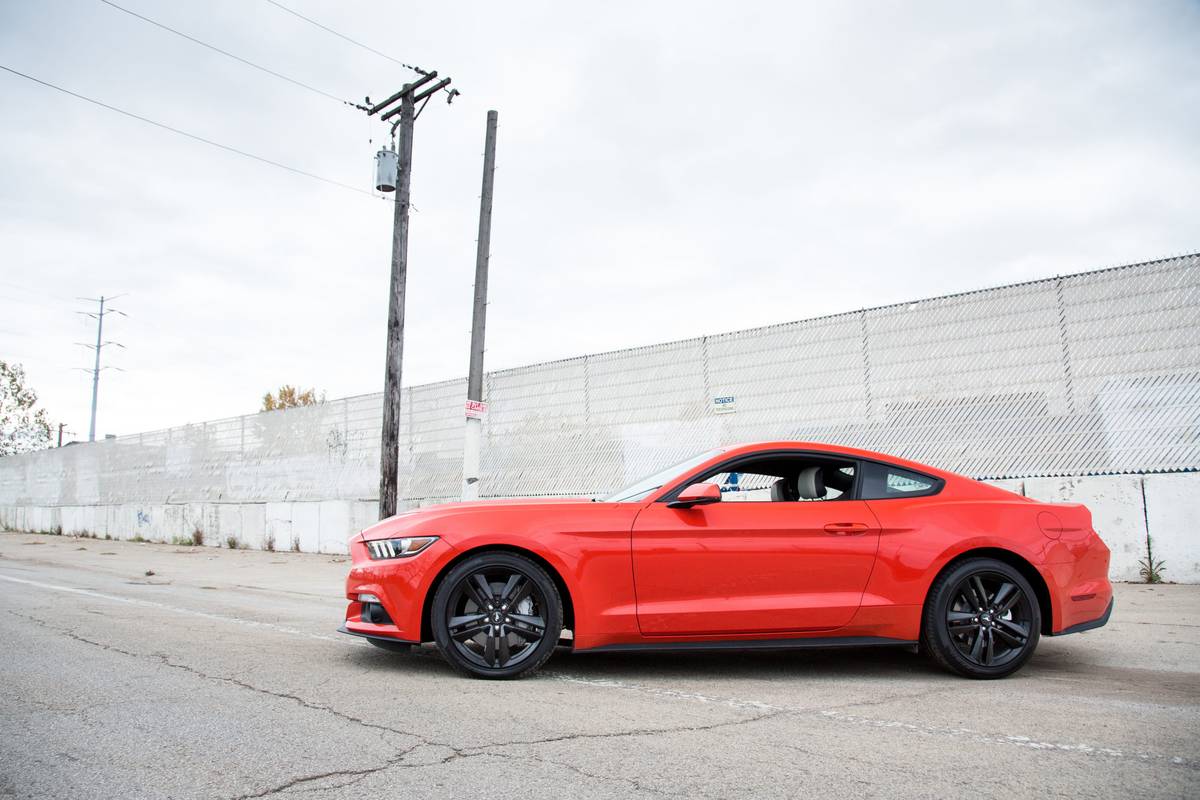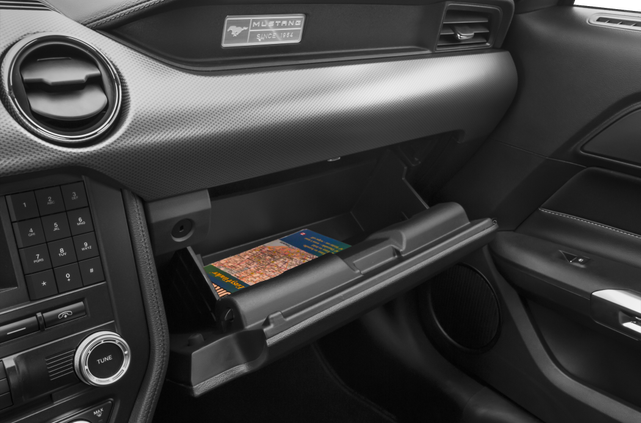Ford gets it right with the 2015 Mustang, thoroughly upgrading the historic muscle car inside and out while providing a welcome dose of the latest technology.
For 2015, Ford has completely redesigned its iconic pony car, an event that’s happened only a handful of times in the car’s 50-year history. This time, it’s produced a visually trimmer, meaner sports car with a new mission: take the Ford Mustang mystique to global markets.
Ford has sold the Mustang overseas before, but this new one — with its fully independent suspension, optional turbocharged four-cylinder engine and dramatically improved build quality — is made to challenge not only American competitors at home, but foreign coupes on foreign shores.
The 2015 model is a major redo compared with the outgoing 2014 (compare the two here), with new powertrains, a new interior, new technology and more. Yet a new Chevrolet Camaro is on the way and Dodge has just updated the 2015 Challenger. Is the new Mustang enough of an update to regain its status as king of the pony-car hill? I’ve driven two of the three powertrains available in the 2015 Mustang — the EcoBoost four-cylinder and the big V-8 (the V-6 has not yet been made available to sample) — and here’s how they stack up.
At first glance, you’d be forgiven for thinking not much has changed from the old Mustang to the new one. The jury’s still out as to whether Ford went far enough in updating the car, but when spotted next to an outgoing model on the highway the subtle differences and styling improvements become obvious. The ’15 also adds many design themes from non-muscle-car Fords, like the hexagonal grille and lidded headlights, butched up for muscle-car duty.
Comparisons are still being made, however, with the Ford Taurus and Fusion sedans, and it’s certainly possible to see those cars’ influence. The Mustang’s best angle may be the rear three-quarters, where the svelte and sloped tri-bar LED taillights look absolutely fantastic and the muscular wheel arches become much more prominent. The roofline and window openings are also subtly different from the 2014 model. The overall look is conservative, but nobody will mistake it for anything other than a Mustang.
I’ve driven the Ford Mustang on several occasions, first on canyon roads around Los Angeles and most recently at a private racetrack in rural Illinois. Along with the carryover V-6 and V-8 engines — both with revised power output — comes a new entry: a turbocharged, 2.3-liter four-cylinder direct-injected EcoBoost engine that’s also found (in slightly less-powerful form) under the hood of the Lincoln MKC crossover. In the Mustang, it makes 310 horsepower and 320 pounds-feet of torque — extremely impressive lb-ft numbers for a four-cylinder engine.
Consider: This is more horsepower than the 1996 Ford Mustang SVT Cobra’s 4.6-liter V-8 pumped out, and it’s said to get 32 mpg on the highway. That’s serious progress, folks. Even though the Mustang EcoBoost I drove came with a six-speed automatic transmission, it was highly enjoyable. Punch the push-button start, now standard in all Mustangs, and the turbo four growls to life with a surprisingly throaty rasp. You’ll never mistake it for the V-8 in the GT, but it has a certain aural charm all its own. It should be noted, however, that all the sound you hear isn’t coming from the engine — it’s supplemented by a prerecorded soundtrack that’s piped through the speakers. Ford does this because the turbocharged engine is simply too quiet for the Mustang; all the sound insulation and the turbocharger itself act to quiet the exhaust noise to the point that it simply doesn’t sound like a proper sports car. The piped-in music fixes that, and if you didn’t know it wasn’t live, you wouldn’t be able to tell. Just turn it on, snick the automatic transmission into Drive, give it gas and prepare to be surprised — this thing is quick.
Various publications have pegged the Mustang EcoBoost’s zero-to-60 mph time in the mid-5-second range — not too shabby for a car this heavy. In fairness, I should point out that all the cars in this class are heavy, and of the trio of Camaro, Challenger and Mustang, the Ford is the lightest. The automatic transmission kicks down noticeably when you give it some gas, but in around-town driving it’s extremely flexible, with a broad torque curve. Get out into the canyons and flip the toggle switch to engage Sport mode, though, and the Mustang EcoBoost comes alive. (It’s one of four standard selectable drive modes.)
The systems that Sport mode affects, such as steering effort and transmission shift aggressiveness, can also be independently adjusted. In Sport, steering feel firms up noticeably, throttle response gets more rapid and the transmission becomes amazingly precise. In short, it becomes remarkably fun to drive. Oddly, the same cannot be said on the track. The EcoBoost Mustang some of my colleagues drove there did not exhibit the same kind of spirit as the one I drove on twisty streets, leading us to wonder whether the EcoBoost is simply better-suited to real-world driving than track work — at least with the automatic transmission.
The suspension — now all independent, front and rear — keeps the Ford Mustang solidly planted. With the EcoBoost’s optional 18-inch alloy wheels, ride quality is superb, but it’s less so when the sport suspension and the GT’s optional 19-inch alloy wheels come into play. The tuning should impress even European drivers who have long considered American cars to be rubbish. Unlike four-cylinder Mustangs of the past, buyers can check the option for the 2015 EcoBoost and not regret their decision in the slightest.
Of course, the GT — with its 435-hp V-8 — is more of everything. More noise, more thrust, more ability — but also more weight and more money. It doesn’t feel quite as agile as the EcoBoost, but what it lacks in fancy moves it makes up for in brute force and V-8 audio bliss. The Getrag six-speed manual transmission has clean, easy shifts, but the clutch is fairly heavy; driving it through stop-and-go Los Angeles traffic has to be one of Dante’s circles of hell.
The GT also brings bigger brakes that are firmer but less easy to modulate than those on the standard EcoBoost; they’re great for bleeding off speed before turning into a corner, but not as great when you’re just trying to negotiate rush hour. For some people, the V-8 is essential to the pony-car experience, and I understand that thinking — it’s visceral and exciting and something of a tradition. But for the first time, a lesser motor in the Mustang may be just as entertaining, thanks to a far more balanced overall package.
That said, on the track the V-8 GT is just crazy amounts of fun. Instant torque-on-demand means you can steer with either the wheel in your hands or the pedal under your right foot, your choice. The two powertrains I tested create Mustangs with two very different personalities. If you intend to drive yours on a track often, the V-8 GT might be a better choice, but if you simply want an agile sports car that can make your commute through the back roads more entertaining, the EcoBoost version is the one to choose.
Fuel economy varies for each powertrain depending on which transmission you opt for — the base V-6 with a manual transmission is rated 17/28/21 mpg city/highway/combined, climbing to 19/28/22 mpg with the automatic. The EcoBoost four-cylinder is more powerful than the V-6 yet is rated higher: 22/31/26 mpg with the stick-shift, 21/32/25 mpg with the automatic. Of course, the big V-8 isn’t quite so frugal, rated 15/25/19 mpg with the manual, 16/25/19 with the automatic. That’s about dead even with comparable V-8-equipped Camaros and Challengers. Comparing the turbocharged four-cylinder Mustang with the V-6 Camaro and Challenger, however, gives the advantage to the Mustang, which is why everyone expects to see a four-cylinder Camaro in the not-too-distant future.
Ford has done considerable work on the Mustang’s interior, and one absent feature should send cheers throughout the automotive world: There isn’t a single touch-sensitive control panel anywhere, aside from the central LCD touch-screen. Quite the opposite, in fact: Ford has introduced toggle switches along the base of the center console for hazard lights, stability control, steering effort adjustment and the Drive Select mode function.
The all-new Ford Mustang’s interior combines the best of two competitors — the neat retro styling touches of the Camaro with the roomier environment of the Dodge Challenger. Like that car, the Mustang has the width and headroom to keep bigger drivers happy, with decent forward visibility thanks to a long, sculpted hood stretching out before you. More surprising is how good visibility is over your shoulder: the long side windows have been extended since the outgoing model, eliminating the little quarter windows and noticeably improving visibility to the rear and sides.
The base model’s seats are supportive and comfortable, with Recaro leather seats an option for performance-minded buyers. But the Recaros have some issues: They’re not comfortable, largely due to their limited adjustability, they’re not power-operated, and their wide shoulder supports make a new lever in the Ford Mustang — located in the top middle of the front seatback and used to fold it forward for entry into the rear seats — completely unusable. You simply can’t reach it from outside the car, making me wonder if anyone even tested this feature before production started. You’d be better off sticking with the power-adjustable, non-sport seats. Of course, access to the backseat isn’t terribly important, anyway, as it remains too tiny for adult use. It might work for pre-teen children.
Ford’s Sync system is standard, but MyFord Touch is optional only on higher trims. That system brings a big touch-screen to the center console, within easy reach of driver and passenger. It’s familiar fare from Ford and works quite well — even the voice commands that used to be a problem. A standard “Track Apps” suite of programs allows the driver to adjust engine, steering and transmission tuning between Normal, Sport, Eco and Track modes, while a “line-lock” launch-control feature also comes standard, enabling drag-strip style starts by braking the front wheels and letting the rear tires spin and heat up. Track Apps is similar to the Performance Pages app found in Dodge’s new Challengers and Chargers, and it’s both fun and useful.
Storage has been improved in the new Ford Mustang, both up front and in the trunk. More thought has gone into it, too. The front cupholders have been relocated closer to the passenger and pushed farther back to minimize stick-shift interference. The door pockets are deeper, as is the glove compartment, which now has a knee airbag built right into the glove box door. The trunk is larger, with a bigger and lower opening that now enables it to accommodate two sets of golf clubs. It’s not as big as the Challenger’s massive trunk, but it’s more commodious than the Camaro’s single-duffel-bag capacity. The Mustang brings 13.5 cubic feet of trunk space, versus just 11.3 cubic feet in the Camaro. The Challenger, which is essentially a short-wheelbase, two-door Charger sedan, beats everyone with a voluminous 16.2 cubic feet.
The Mustang’s redesign also brought a change in its electrical systems, which has enabled Ford to add available advanced features like blind-spot warning, forward collision alert and adaptive cruise control, plus standard additional airbags, including the aforementioned passenger knee airbag that’s mounted in the glove box door. The Mustang was too new to have been crash-tested as of publication. See all the Mustang’s standard and optional safety features here.
The Ford Mustang spans a wide range of prices, starting at $24,425 (including destination) for a V-6-powered fastback with a manual transmission. A convertible model is also available, with the least expensive version just edging under 30 grand, at $29,925. The cheapest EcoBoost-equipped four-cylinder Mustang comes in at $25,995, but to get that engine in a convertible you have to shell out for the EcoBoost Premium trim, which starts at $35,495. The V-8 comes in the GT, starting at $32,925. The most expensive Mustang is a loaded GT Premium convertible with a special 50th Anniversary appearance package that costs more than $50,000.
The performance deal of the decade may just be the EcoBoost coupe with a $1,995 Performance Package that adds bigger brakes, 19-inch wheels, a gauge pack for the interior, a 3.55 limited-slip rear axle, a larger radiator and the sport suspension. For around the same price as a loaded Scion FR-S or Honda Accord coupe, you’ll get a car that can run rings around either of them at any track day, and is far more comfortable and spacious to boot.
The Ford Mustang’s competitors are just as legendary as the Ford. This generation of the Chevrolet Camaro is on its last year — due for replacement for the 2016 model year — but constant upgrades to packages and performance trims have made it the better-selling car for a while now. It’s not nearly as comfortable or nice inside as the new Mustang, and visibility out of it is atrocious. But in ZL1 guise it’s a performance monster — and has some of the only comfortable Recaro seats in existence.
The Dodge Challenger just got a makeover for 2015, too, and it’s considerably improved from its previous incarnation. Easily as nice inside as the new Ford Mustang, it’s even bigger inside and out (you can fit three child-safety seats in the back of a Challenger), has more powerful engines (Hellcat!), plenty of retro style, and comparably good fuel economy in V-6 trim. What it does not have is a convertible model, much to many sun enthusiasts’ dismay. Less-conventional competitors might be the aforementioned Subaru BRZ or Hyundai Genesis coupe, or even the front-wheel-drive Honda Accord coupe. They’re all similar in price but not in performance, making the Mustang a better value than any of the other similar cars. Compare the Ford Mustang to its competition here.

